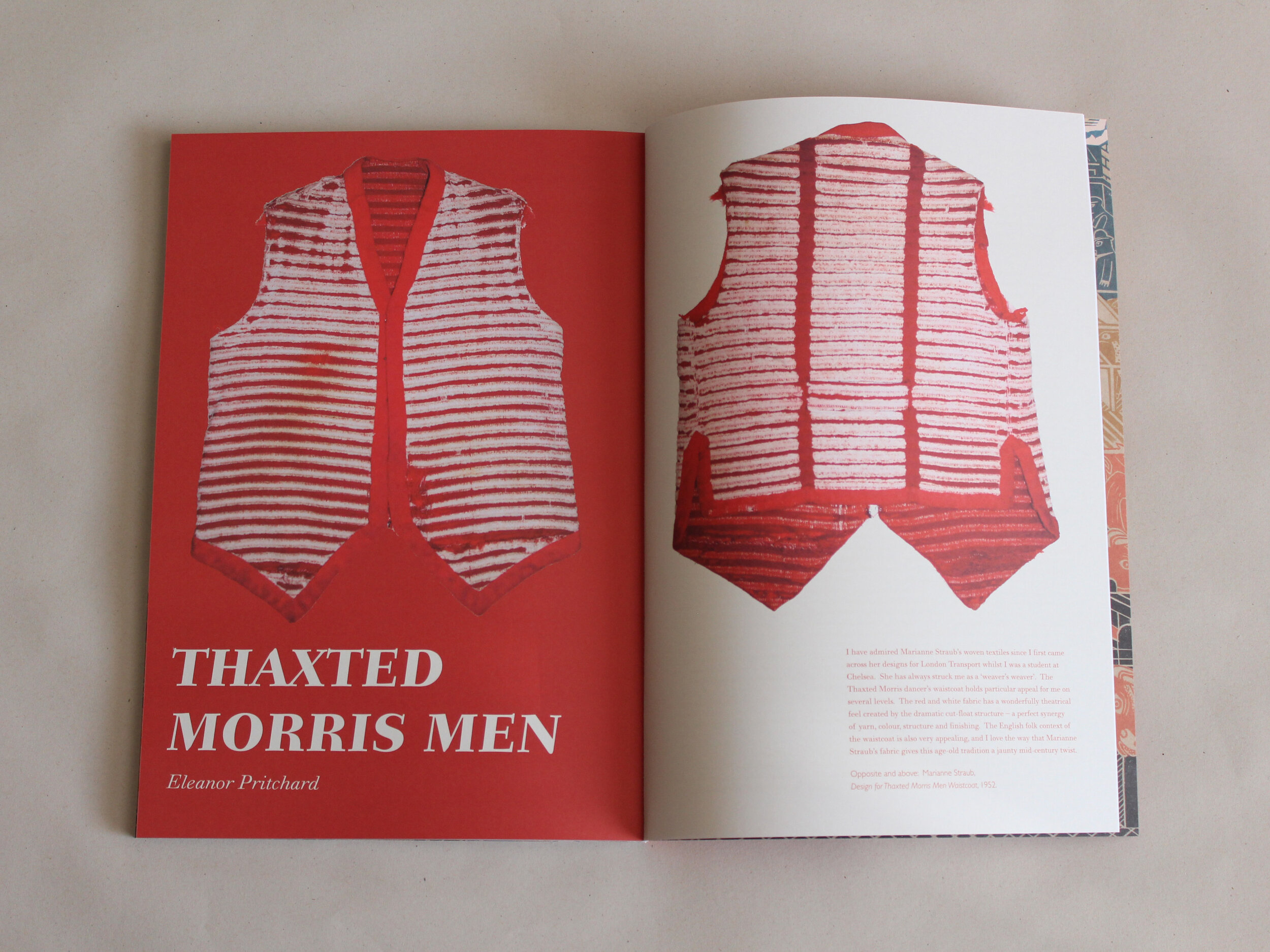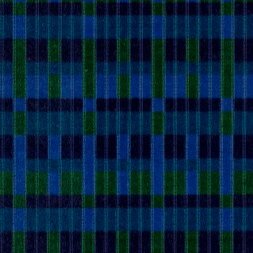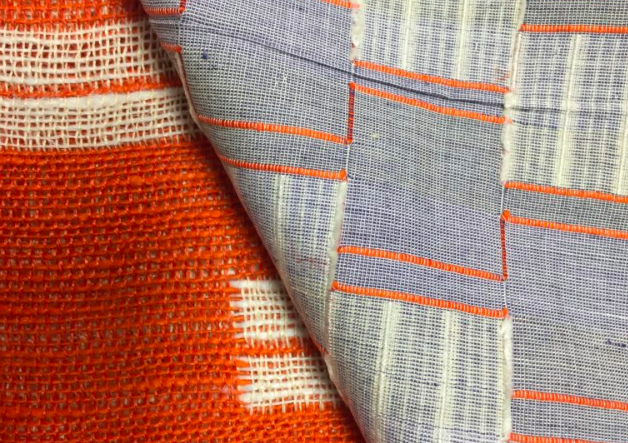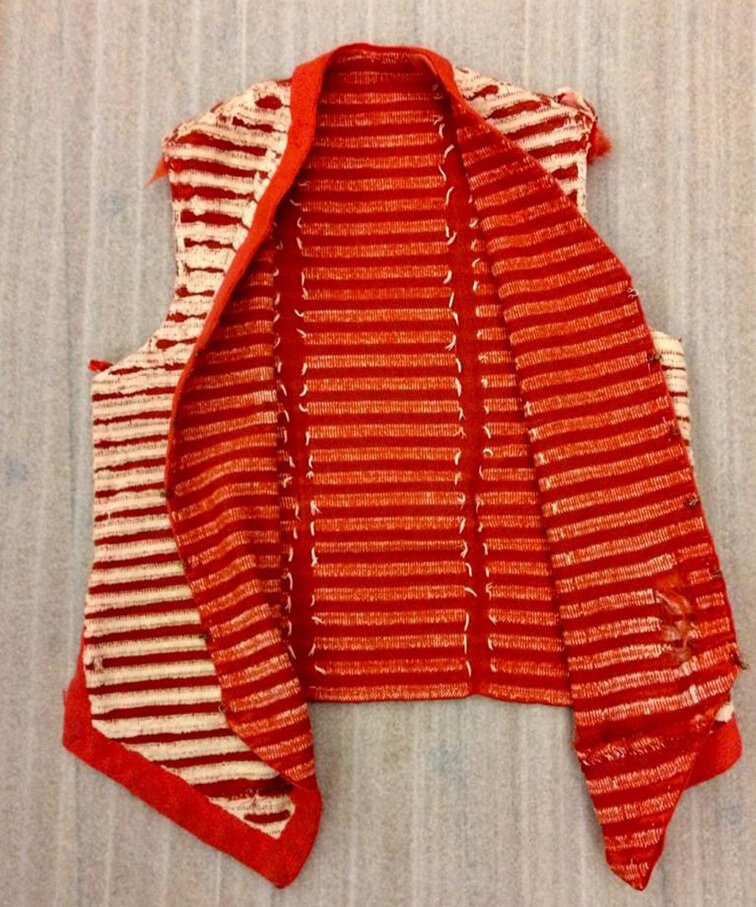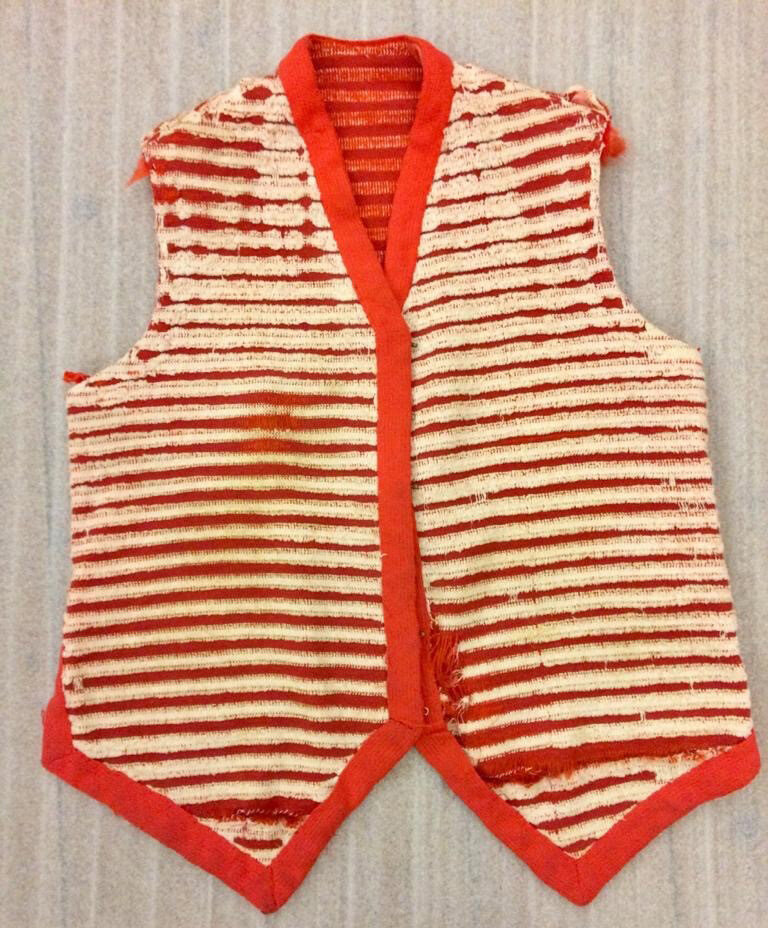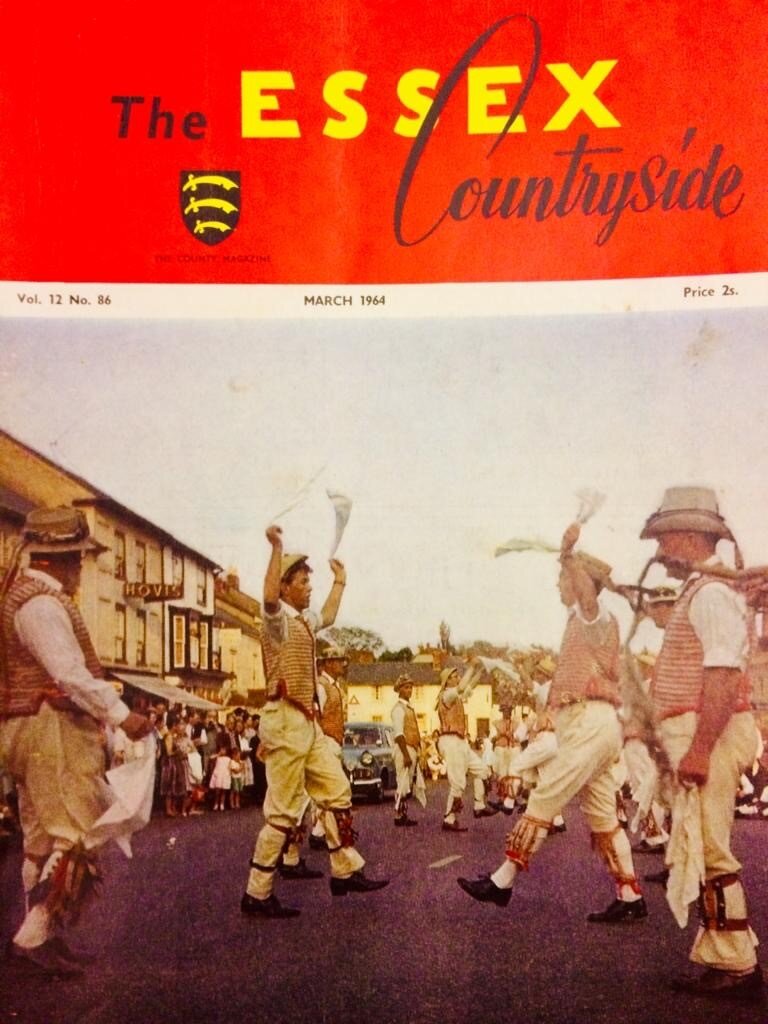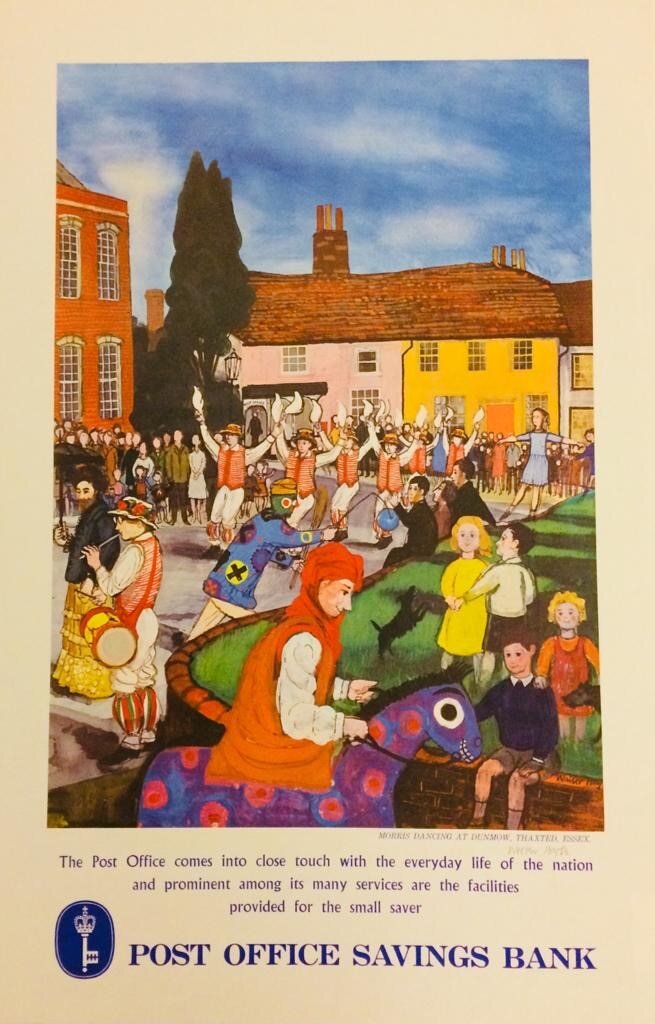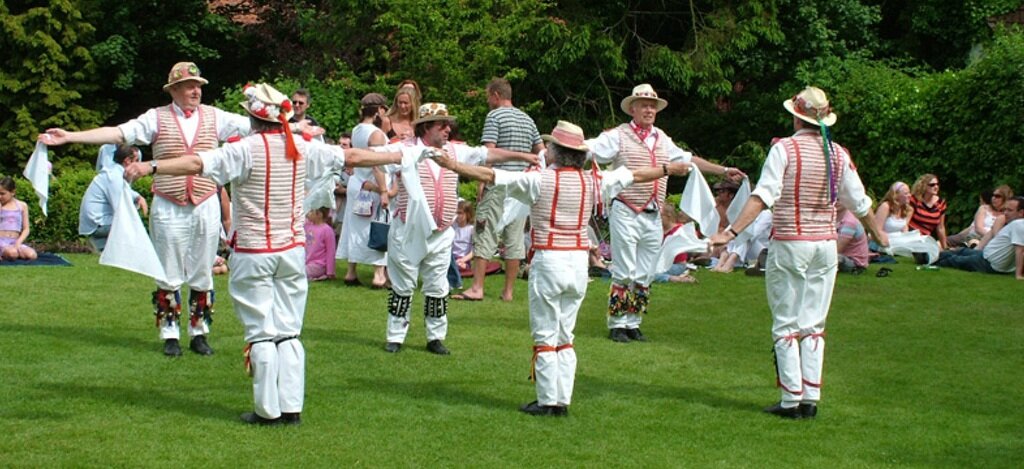Marianne Straub
Marianne Straub has long been one of my weave icons. I first came across her work when I was a student, writing about London Transport fabrics for my dissertation, and I immediately fell for the cleverness and the elegant economy in her designs.
So I was delighted when Simon Lewin asked if I would write a brief paragraph about her ‘Thaxted Morris Men Waistcoat’ for the latest edition of the Random Spectacular which is produced by St Jude’s in conjunction with the eponymous exhibition at the Fry Gallery.
Below is the page page from the publication, and you can read more about this wonderful edition here.
Marianne Straub was born in Switzerland, the second of four daughters of textile merchant Carl Straub and his wife Cécile Kappeler. She studied weave in Zurich under Heinz Otto Hürlimann (himself a student at the Bauhaus), before coming to Bradford Technical College. Swiss technical colleges at the time did not admit female students, and she was something of a pioneer at Bradford as only the third female student there. The course was rigorous and technical, and equipped students for industry.
Following her sojourn at Bradford Straub spent some time at Ditchling, under the wing of Ethel Mairet. Here she developed her hand-weaving skills, and for the rest of her career she used hand-woven sampling as a means to design and prototype for industrial production. This combination of hands-on sampling, combined with a keen understanding of the capabilities and constraints of industrial production set a winning formula that many weave design studios use today.
Straub’s career soon took off, and she worked for the Rural Industries Bureau as a consultant to the Welsh Milling Industry from 1934-7. In 1937 Straub joined Helios, and within a decade rose to Managing Director. In 1950 she moved to Warner & Sons where she remained until 1970. Warners were based in Braintree, Essex, and in 1953 Straub moved home to nearby Great Bardfield - joining the creative community there which included Edward Bawden, John Aldridge and Sheila Robinson amongst many others. Regular readers of this journal may remember that another Great Bardfield resident was corn dolly-maker extraordinaire Fred Mizen.
Below left you see one of Straub’s most well-known moquette designs for London Transport. The design was in use from 1969-1978, and I can remember as a young child seeing it on the Piccadilly Line.
Below right are a pair of samples in the Gordon Russell museum collection which illustrate the beautifully clever simplicity of Straub’s designs. Never fussy or over-worked, they demonstrate everything I love about her confident mastery of yarn and structure.
And this below is the original Thaxted Morris Men waistcoat, dating from 1952. The fabric was designed by Marianne Straub and woven by Warners. Alex Hunter - then production manager at Warners was also the Squire of the Thaxted Morris Men… so you can see how everything connects. The waistcoats were made up by his Alex’s wife Margaret Hunter, and replaced an old set in chintz.
This is the text I wrote for Random Spectacular:
I have admired Marianne Straub’s woven textiles since I first came across her designs for London Transport whilst I was a student at Chelsea. She has always struck me as a ‘weaver’s weaver’. The Thaxted Morris dancer’s waistcoat holds particular appeal for me on several levels. The red and white fabric has a wonderfully theatrical feel created by the dramatic cut-float structure – a perfect synergy of yarn, colour, structure and finishing. The English folk context of the waistcoat is also very appealing, and I love the way that Marianne Straub’s fabric gives this age-old tradition a jaunty mid-century twist.
Above here are a couple of publications from the Fry Gallery archive which feature the Thaxted Morris Men sporting their beautiful waistcoats.
The fabric for the waistcoats was re-woven in 1995 by Beaufort Weavers in Hammersmith for a replicate set, which is still in use today. Here is the team, splendid in their full regalia.

